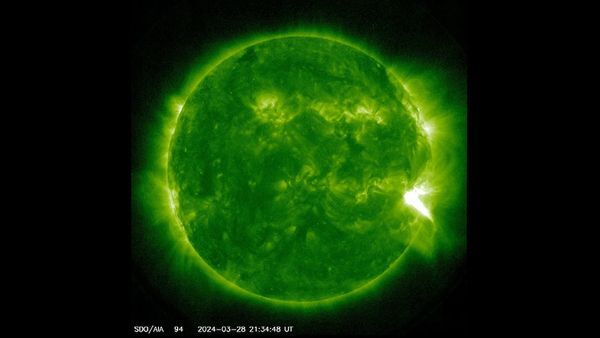Fucking enough “slams” in headlines!!!¹¹11one. /s
The abundance of back-to-back solar events has led scientists to think the sun may have entered its explosive era of peak activity, known as solar maximum — which seems to be starting a year earlier than previous forecasts predicted. However, researchers will have to wait until the sun “calms down” to know for sure.
What we do know is that X-class flares are most common during solar maximum, which is part of the sun’s 11-year solar cycle. So far in 2024, seven X-class flares, including the latest one, have burst from the sun, which is already half the number that reached Earth in 2023, Live Science previously reported.
On a long enough timescale, we’re gonna be hit by a big one.
I remember like a decade ago they were saying it hits a developed area, it’ll blow out all the transformers, and on that scale no country could replace them all for a very long time.
I agree. There were articles and documentaries about 20 years ago that I remember featuring these sort of events. The continent affected would take 20-30 years to rebuild its electricity grid.
I’ll just never get over how “we” (science I guess) know that stuff like this isn’t a question of if, but when.
And we just don’t seem to get ready for it.
Like, Y2K we saw coming and everyone handled it in time. But if there’s no firm date on something, everyone with the power to do anything just ignores it.
As a society it just feels like we’re living paycheck to paycheck. Can’t worry about next year cuz rents due in two weeks shit.
It’s just not a good way to go about things.
In general, people are appallingly bad at weighing up long-term vs short-term stuff, both in terms of risks and benefits. It’s even worse when, as you say, there’s no definite deadline or it doesn’t directly affect those who can do something about it.
“No electricity” definitely sounds like an “everyone” problem lol
If it’s an EVERYONE problem, clearly SOMBODY is doing something, so I can safely ignore it. /s
What you didn’t see was the guy who made the problem in the 60s warn everyone about it from the 70s onward until his retirement in the 90s, then everyone say oh shit, he is right.
I believe it’s possible to avoid if the proper protocols are in place. Namely, the grid has to be turned off completely before the flare hits and then things will mostly be fine. Just wonder how well we can predict these events.
My understanding is that we actually don’t have much of a warning (under an hour), since a CME has to reach the satellite at the Lagrange point between Earth and the Sun for us to know it’s about to hit Earth. According to the article below, this includes power companies, but I remain skeptical that there’s enough organisation in place to shut down the North American, European or Asian grids in 15 minutes.
…
Yes, we get hit by them all the time…
What everyone else is talking about is a big one.
The Carrington event was a big one. It is estimated to have been an X40 flare. This article is about an X1.1 flare. Telegraph poles caught fire. The auroras were so bright people woke up and started making breakfast even though it was the middle of the night. They were visible as far south as central Mexico! If we got hit by a Carrington scale flare today we would be repairing the power grid for the next half century.
This is the best summary I could come up with:
On March 28, Earth was hit by an X-class solar flare that was strong enough to ionize part of the planet’s atmosphere.
Scientists spotted the solar flare erupting from the bottom of the sun on Thursday (March 28), using satellites from the National Oceanic and Atmospheric Administration (NOAA), according to the organization’s Space Weather Prediction Center.
The explosion was so powerful that it ionized the top of Earth’s atmosphere, resulting in a “deep shortwave radio blackout over the Pacific Ocean,” SpaceWeather.com reported.
NOAA scientists were initially concerned that the CME would collide with Earth, potentially resulting in a geomagnetic storm that could impact satellites, radio communications and other infrastructure.
This solar event comes on the heels of a “double” X-class flare that occurred Monday (March 25), triggering the most powerful geomagnetic storm on our planet in six years.
So far in 2024, seven X-class flares, including the latest one, have burst from the sun, which is already half the number that reached Earth in 2023, Live Science previously reported.
The original article contains 376 words, the summary contains 169 words. Saved 55%. I’m a bot and I’m open source!




